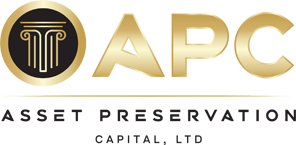By Ian Berger, JD
IRA Analyst
If you are making student loan repayments, you should ask your employer if it will match those payments in the company’s retirement plan. The SECURE 2.0 Act allows for matching contributions on “qualified student loan payments” (or “QSLPs”) beginning with plan fiscal years starting after December 31, 2023. (This is January 1, 2024 for most plans.) Matches on QSLPs are optional; plans are not required to offer them.
SECURE 2.0 lacked detail about how these matching contributions would work, and that made many employers reluctant to implement this new option. On August 19, 2024, the IRS issued Notice 2024-63. The Notice answered several pending questions about the matching contribution feature and gave employers flexibility in establishing and administering the feature. This guidance should spur more employers to offer the QSLP match.
A QSLP match may be provided by a 401(k) plan, a 403(b) plan, a governmental 457(b) plan or a SIMPLE IRA.
To be a QSLP, the payment must be a repayment of a loan incurred by the employee to pay for higher education expenses of the employee, his spouse, or his dependent. A loan is “incurred” if the employee has a legal obligation to repay it. If an employee cosigns a dependent’s loan, the employee must be making the payment in order for it to qualify as a QSLP. If the dependent is making the payment, the employee can’t have those payments matched.
The total amount of QSLPs made for a calendar year can’t exceed the annual deferral limit in effect for that year (for 401(k) 403(b) and 457(b) plans in 2024, $23,000, or $30,500 for age 50 or older) minus any elective deferrals made during that year.
Example: Caroline, age 40, participates in her company’s 401(k) plan which matches on QSLPs. During 2024, she has $15,000 of qualified student loan payments. She may only make elective deferrals up to $8,000 ($23,000 – $15,000) during 2024.
Employees must certify that the loan payment satisfies the QSLP requirements and must certify the amount of the loan payment, the date of the loan payment, and that the payment was made by the employee. The certification rules are user-friendly but complicated. Employees can self-certify all of these requirements, but there are other ways to comply. Check with the plan administrator or HR to see what level of certification is required by your plan.
The IRS Notice also says that the QSLP match must be available to all employees eligible to receive matches on elective deferrals. So, an employer can’t limit QSLP matches to loan payments for an employee’s own education, a particular degree program (such as a Bachelor of Arts) or attendance at a particular school. The reverse is also true: All employees eligible to receive matches on QSLPs must be eligible to receive matches on elective deferrals.
Finally, QSLP matching contributions must be made at the same rate, and under the same vesting schedule, as the plan’s regular matching contribution. If a plan imposes any eligibility condition on a QLSP match (such as requiring employees to be employed on the last day of the plan year to qualify), the same condition must apply to a regular match.
https://irahelp.com/slottreport/401k-plans-can-now-offer-matching-contributions-on-student-loan-payments/

